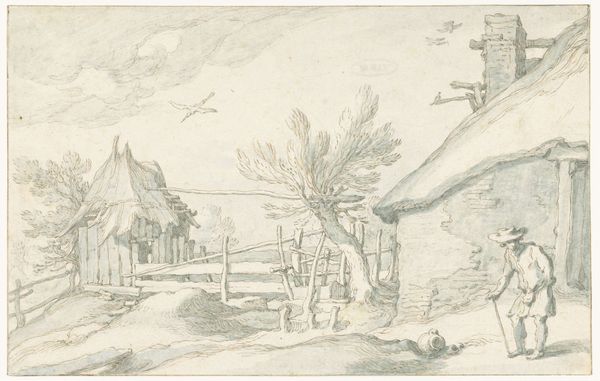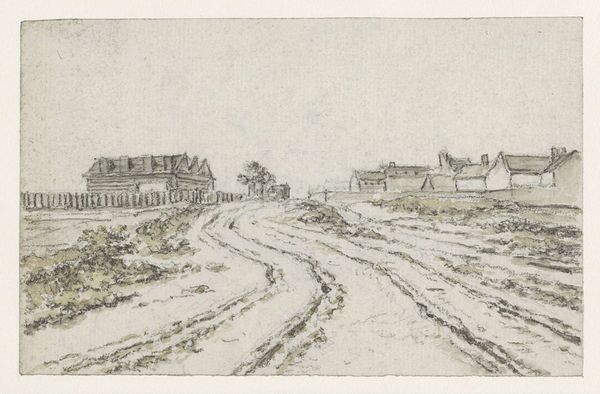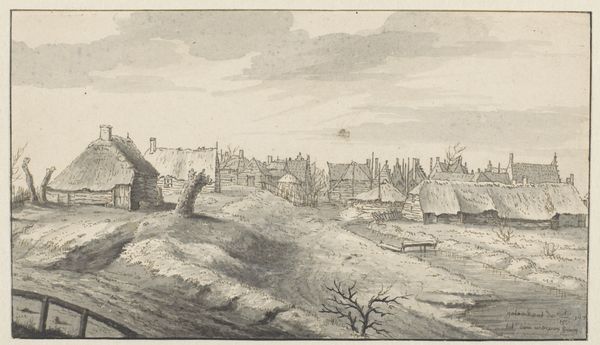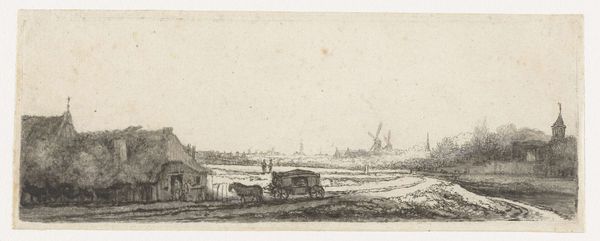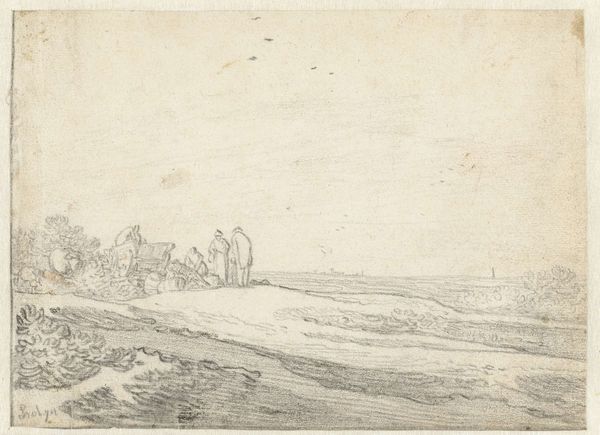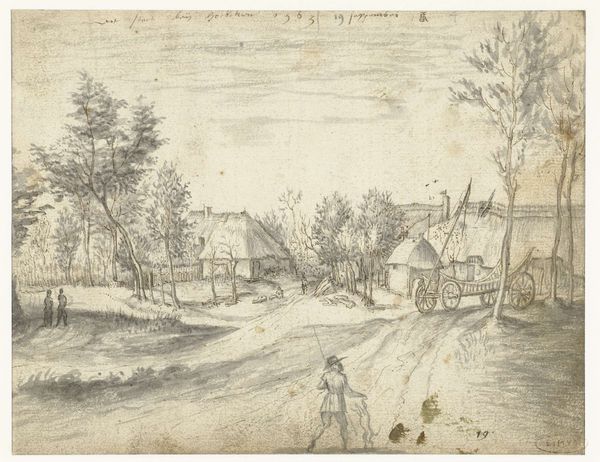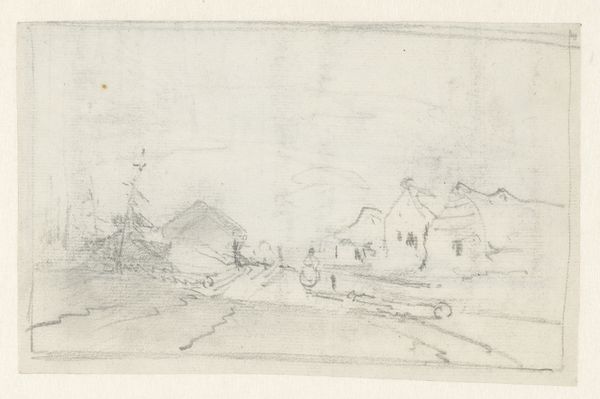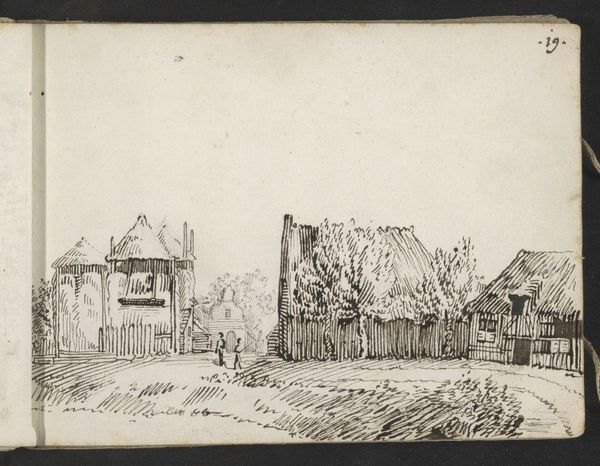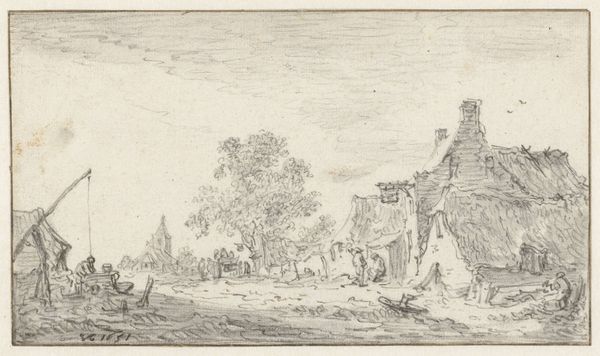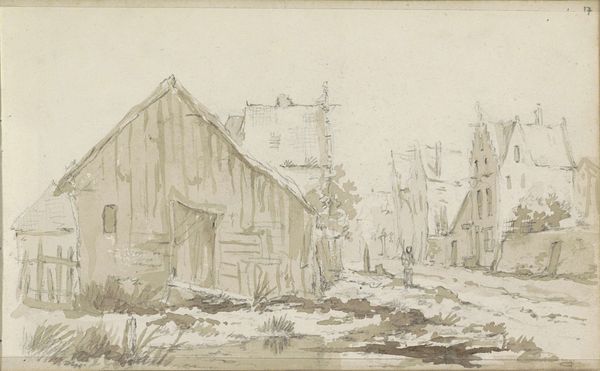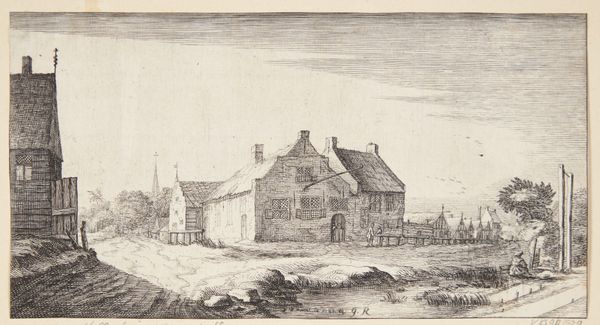
drawing, watercolor, ink
#
drawing
#
dutch-golden-age
#
pen sketch
#
landscape
#
watercolor
#
ink
#
pen-ink sketch
#
cityscape
#
watercolour illustration
Dimensions: height 106 mm, width 161 mm
Copyright: Rijks Museum: Open Domain
Curator: Immediately, there's a stillness. It’s mostly in shades of grey and light blues, which gives it a quiet, almost melancholic atmosphere. Editor: We’re looking at “Dorpsgezicht”, a pen and watercolor drawing by Claes Jansz. Visscher. Dating from the Dutch Golden Age, specifically around 1596 to 1652, it presents a detailed vista of a village. Visscher was a prolific printmaker and this sketch really captures the emerging Dutch landscape tradition, one rooted in asserting their new, hard-won nationhood through material connections to the land. Curator: I notice the technique – the repetitive strokes of ink that build up the forms of the houses. It is efficient, but very controlled, which indicates a careful studio practice. Also, observe how the application of the blue watercolour subtly indicates mass production of these images through division of artistic labor at the time, potentially where different workshops tackled drawing or coloring specifically. Editor: And those strokes, for me, echo something more – the vulnerability and endurance of rural communities shaped by economic disparity. Each stroke reminds us how the rural subject became romanticized even as labor practices began to rapidly shift towards the city, reshaping the nation’s cultural and economic focus. Curator: That's a keen point, looking at how art was evolving simultaneously with economic developments and labor changes during that period in Dutch society. I also appreciate Visscher's economy of means, choosing to represent rather than to recreate meticulously. The focus is certainly not on realism; rather, a study on the industrial potential for prints to provide art for wide public distribution. Editor: But within that production there's a nuanced interplay. How does a place’s identity get shaped, transformed, and romanticized through this new mode of production and mass visual consumption? And for whom? Even here, questions about what art and 'high culture' should mean were actively contested through subject matter like this "Dorpsgezicht." It's much more than just pen on paper, it's about labor, ownership, and even early forms of tourism. Curator: True. Seeing the buildings themselves gives hints toward standard sizes, materials sourced locally—again connecting material conditions to creative decisions. Also how a limited number of forms may show resource constraints faced by individual families—and opportunities provided in the mass housing production by those new forms of manufacturing, print shops! Editor: It prompts us to investigate what elements we choose to depict and why we choose them. As such, Visscher's “Dorpsgezicht”, viewed through the lens of production, materials and consumption, continues to resonate in art historical studies as a crucial turning point that informs identity.
Comments
No comments
Be the first to comment and join the conversation on the ultimate creative platform.


